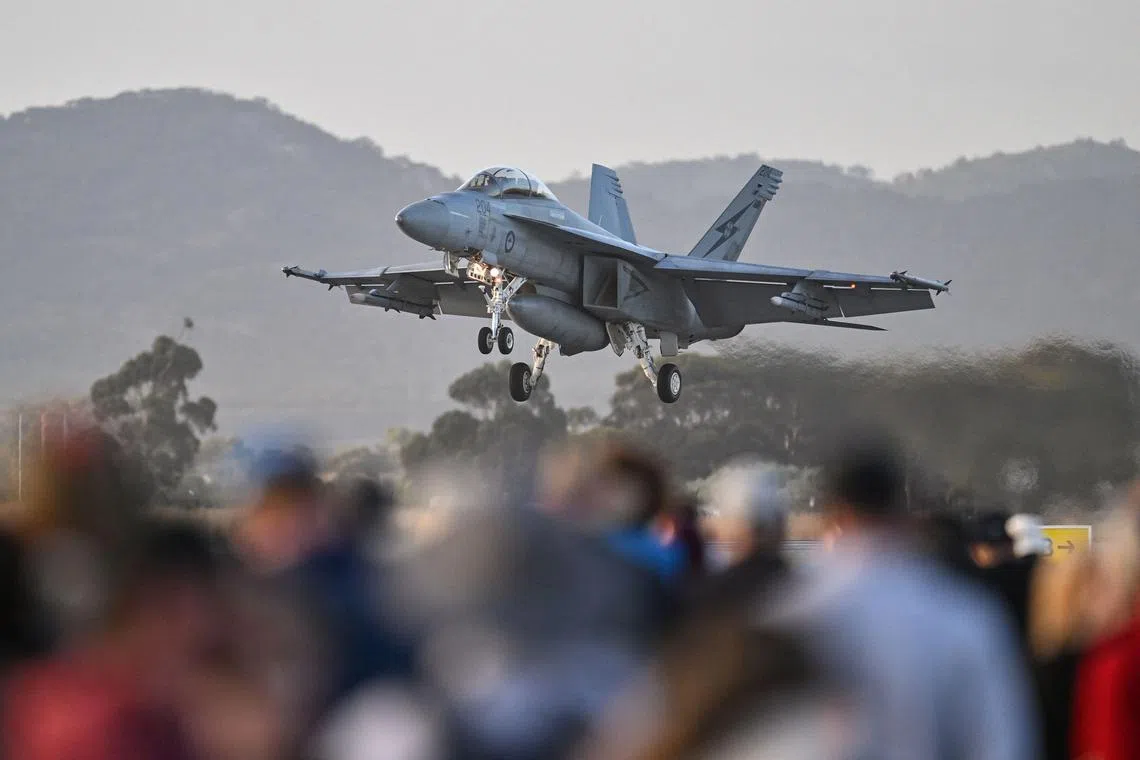Australia plans major changes to military as US dominance fades
Sign up now: Get insights on Asia's fast-moving developments

Australia’s defence will prioritise long-range precision strike capability and domestic manufacturing of guided weapons.
PHOTO: AFP
Follow topic:
CANBERRA – Australia’s government will prioritise its long-range precision strike capability, domestic production of guided weapons, and diplomacy – key points of a review released on Monday recommending the country’s biggest defence shake-up since World War II.
Australia’s military is not “fit for purpose” as it currently stands, according to the Defence Strategic Review.
It recommended that the government reprioritise spending toward purchasing long-range missiles and military drones, while boosting domestic defence manufacturing.
The centre-left Labor government ordered the review of defence strategy and military spending shortly after coming to power in May 2022, in part due to concerns over lengthy delays in procuring new vehicles and weaponry.
Conducted by a former foreign minister and defence chief, the review said Australia is facing a “radically different” strategic environment, including a military build-up by China, which is “the largest and most ambitious of any country since the end of the (World War II).”
The review said the United States is no longer the “unipolar leader of the Indo-Pacific”, intense competition between the US and China is defining the region, and that this competition has “potential for conflict”.
Australia’s northern bases will become a focus to deter adversaries and protect trade routes and communications, the review said.
Prime Minister Anthony Albanese called the review “the most significant work that’s been done since the second world war”.
“It demonstrates a world where challenges to our national security are always evolving. We cannot fall back on old assumptions. We must build the strength in our security by seeking to shape the future rather than waiting for the future to shape us,” he told reporters.
China is undertaking its largest build-up since World War II, and is engaged in strategic competition in Australia’s near neighbourhood, the review said.
A public version of the classified report said Australia must “avoid the highest level of strategic risk we now face as a nation: the prospect of major conflict in the region”.
The military threat to Australia does not require invasion in the “missile age”, it said.
Australia will work more closely with the US. This entails increased bilateral military planning and hosting more rotations of US forces, as well as acquiring nuclear-powered submarines
Australia must also strengthen defence cooperation with Pacific and South-east Asian nations, the review said.
Defence funding will increase over the next decade, but will stay steady over the next four years at A$19 billion (S$17 billion), with A$7.8 billion diverted from cancelled projects.
Australia must be able to defend its territories and the immediate region, deter any adversary’s attempt to project power through its northern approaches, and protect trade routes and communications, Defence Minister Richard Marles said in the government’s response to the review.
“We aim to change the calculus, so no potential aggressor can ever conclude that the benefits of conflict outweigh the risks,” he said.
Long-range strike and guided weapons are “fundamental to the Australian Defence Force’s ability to hold an adversary at risk”, the review said, adding that domestic production of these weapons would be established and acquisition sped up.
Australia will upgrade its northern bases and ports immediately, and the review said the country must rectify fuel storage issues.
It also called for the development of cyber and space defence capabilities.
Among the areas it said were critical are undersea warfare, as well as drones for surveillance and strike; enhanced targeting; long-range strike; maritime operations for sea denial and local sea control; air and missile defence; expeditionary theatre logistics; and northern bases for logistics support and deterrence.
The review recommends long-range anti-ship missiles for Australia’s F-35A and F/A-18F fighter jets, and the development of the Ghost Bat uncrewed aircraft with the US. REUTERS, BLOOMBERG

